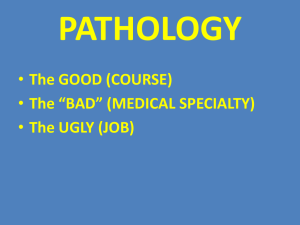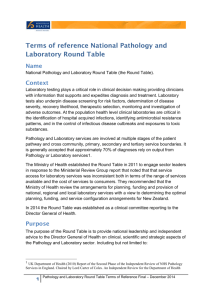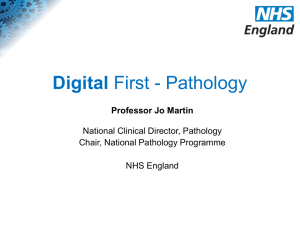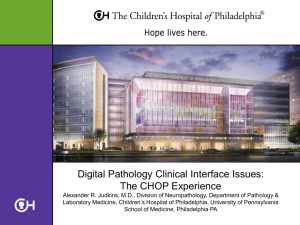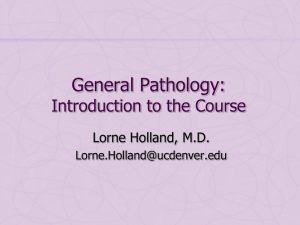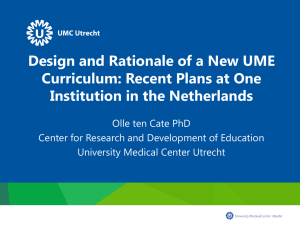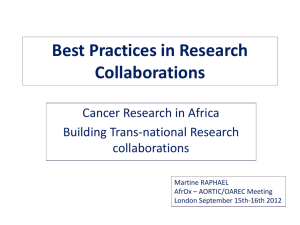View PPT Slides - Digital Pathology Association
advertisement
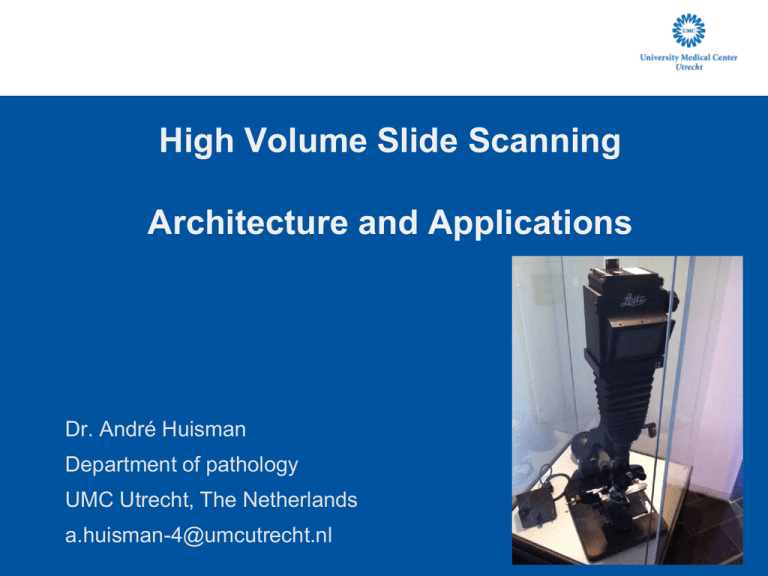
High Volume Slide Scanning Architecture and Applications Dr. André Huisman Department of pathology UMC Utrecht, The Netherlands a.huisman-4@umcutrecht.nl Department of pathology UMCU • UMC Utrecht • >1,000 beds • >10,000 employees • Department of pathology: • 20.000 surgical pathology cases • 156.000 glass slides (histology, cytology, IHC) • 15 pathologists, 10 residents Digital pathology - advantages • Digital Archiving • Instant access from multiple locations by multiple people • No searching for slides • Constant quality • Telepathology • Consultations, revisions and panels • Education • Research • Automated image processing Project background Clinico pathological conferences: • 900 meetings every year • No (multi headed) microscope needed • Quicker preparation of meetings • No retrieval of glass slides from archive Aim (2007) Digitize all diagnostic slides we have (prospectively) Challenges • Scanners • Image size: up to 1 GB x 500 slides per day • No existing infrastructure present for storage of this size at our facility • Image presentation and software integration • Logistics Scanners • Different manufacturers: • Speed • Focusing method • Acquisition technique • z-stack acquisition • File format policy • Application integration • 2007: 3D Histech (Zeiss), Aperio, Hamamatsu, Olympus (US: Dmetrix, BioImagene) • 2010: Leica, Menarini, Philips, Omnyx, BioImagene Scanning logistics • 3 Aperio XT scanners (120 slides per scanner) • Morgue assistants • Mark slides after scanning • 6 Hours per run at 20x magnification (~3 minutes/scan) Storage – HSM • • • • • HSM = Hierarchical Storage Management Sun Microsystems (Oracle) 6 TB available on very fast fibre channel disks 120 TB available on tape (750 GB each) 2 Tape drives • Completely transparent archiving and retrieval (robot) • Access time from tape: 1 - 3 minutes Linking systems • • • • • 1D Barcodes U-DPS: reporting system LMS: Laboratory Management System Spectrum: Aperio’s image management solution Storage system • Own development: integration layer Scanner workflow Other images (e.g. macro) Scanning Database Order form scanner LIS Image / Data server U-DPS HSM Storage 6 TB fast disks 120 TB on tape pathology users Speech recognition Validation • Aim: validate diagnostic use of digital slides • Method: reevaluate diagnosis with same pathologist on scanned slide after washout period (1 year) for several organs • Gold standard: original diagnosis using ‘traditional’ microscopy Preliminary results validation GI tract (%) Skin (%) Same 92 94 Similar 7 5 Discrepant 1 1 • GI tract discrepancy • Different interpretation of abnormality • Glass slide and WSI contained same information • Skin discrepancy • Clinical information not used for interpreting digital slide Pitfalls of digital archive • Costs • Huge storage needs – 40 TeraByte per year (over 57,000 CDs) • Largest storage in the UMCU • Logistics of scanning up to 500 slides per day • Currently scanning almost 24 / 7 • Place of scanning in process • Speed of image retrieval • Image compression (JPEG 2000?) • Backup Education • All students view the same “best slide” • Slide images can be integrated with • Annotations • Questions • Macroscopic images • Other multimedia • Most UMCU microscopy practical sessions are digital • Student satisfaction is high Teleconsultation • Place (small) slide scanners at different labs • Upload digital slides to UMC Utrecht • Aurora mScope Clinical Upload new media • www.pathoconsult.com Digital slide panel discussions Image processing research Image processing applications on virtual slides: • Detecting mitotic figures in breast cancer slides • Use texture features • Establishing histological grade in breast cancer • Segmentation of individual nuclei (on H&E stained slides) • Detect points of interest • Use marker-controlled watershed segmentation • Post processing Conclusions • Routine scanning is possible and makes sense • Future of pathology is digital • Digital pathology is expensive • Digital pathology is just starting.. Together we are shaping Pathology 2.0 Discussion • Limitations current system • Cytology • Speed • Magnification (20x / 40x incidental) • Backup • Quality Control Discussion • Archive heavily used • Educational use still growing • Teleconsultation network growing (www.slideconsult.com) • Need for standards • DICOM / JPEG 2000 • Images, annotations and reports • Mixing scanners and integration with other software platforms (middleware?) • Image management central in workflow for pathologist? Questions?! Huisman et al., Creation of a fully digital pathology slide archive by high-volume tissue slide scanning, Human Pathology, 2010 May; 41(5): 751-7 a.huisman-4@umcutrecht.nl


